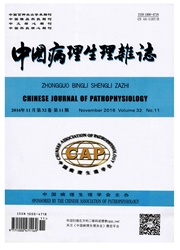

 中文摘要:
中文摘要:
视网膜退行性疾病是现今引起人类失明的严重疾病,它主要包括视网膜色素变性(retinitis pigmentosa,RP)等多种眼科常见病。RP发病率大约1/4 000~1/3 500。常染色体隐形遗传占15%~20%,显性20%~25%,其中10%~15%为X连锁遗传[1],目前已经发现45个致病基因位点[2]。RP患者的临床表现为视力下降,夜盲和视野逐渐变窄,
 英文摘要:
英文摘要:
Retinitis pigmentosa( RP) is a retina disease which leads to a progressive photoreceptors degeneration. Although the inner neurons that mainly include bipolar cells and ganglion cells of retina remain relative stable during the photoreceptors degeneration,studies show that their morphologies and functions are changed during this process. Studies indicate that rod bipolar cells( RBCs) and cone bipolar cells( CBCs) undergo dendritic retraction and remodelling in retinal degenerated mice,and they show changes in expression of the glutamate receptors as well as responses to glutamate and light stimuli. In many animal models of RP,significant decreases in receptive field size,contrast sensitivity,and threshold sensitivity,as well as an increasing spontaneous spiking in retinal ganglion cells( RGCs) were detected. As these modifications may impact the choice and success of intervention strategies for treating retinal degeneration,it is important to understand the characteristics of any functional deficits resulting from photoreceptors degeneration.
 同期刊论文项目
同期刊论文项目
 同项目期刊论文
同项目期刊论文
 期刊信息
期刊信息
